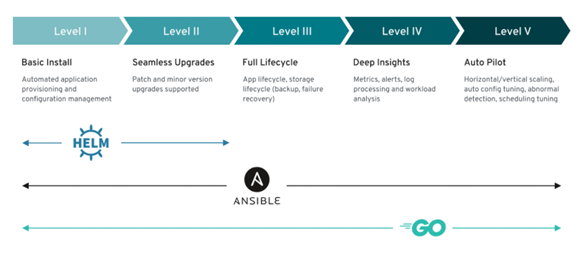
TL;DR:
The Maximo community has many questions about the next version of Maximo and how it will impact companies. This blog reviews at a high level the three big changes that companies and users will experience when upgrading from Maximo to Maximo Application Suite. It sets the stage for a series of blogs from Projetech that will go more in-depth to help answer these questions for Maximo users.
Over the years, IBM has developed new applications, and enhanced existing applications, in the MRO space. Many have been in separate offerings and with separate licensing. Maximo Application Suite brings these applications together as a grouping of EAM products in one suite with a common user interface, a new underlying technical architecture, and a new licensing model.
The big change to Maximo’s capabilities is the inclusion of multiple asset management products into a single suite of applications, and the introduction of a new common application ‘skin’ for user navigation throughout the suite.
The modules from the legacy Maximo system (e.g., Maximo 7.6.1.x) are in the “Manage” Application within the Maximo Application Suite. Industry and Add-on Solution functionality also remain available within Manage. Other modules in the Suite, such as Health and Predict (which were standalone products in the past) are now part of the Maximo Application Suite as well.
Maximo Manage reduces downtime and costs, while Maximo Monitor improves asset availability through advanced AI-powered remote asset monitoring. Maximo Health utilizes IoT data to manage asset health, and Maximo Visual Inspection allows for real-time identification of issues. Maximo Predict leverages condition-based action to predict future failures, and Maximo Mobile provides field technicians with all the necessary asset information. With its streamlined and user-friendly interface, the Maximo Application Suite enables organizations to achieve operational visibility, faster ROI, and increased productivity.
Offering these products in a single suite streamlines installation and administration, while enhancing the user experience with shared data, workflows, and a common user interface. In this way, Maximo Application Suite also enables easier access to a full set of asset lifecycle applications, with the flexibility to start at any point in the asset lifecycle and expand into other areas. The Maximo Application Suite can also be an accelerator to the digital transformation of traditional asset maintenance into Artificial Intelligence (AI) driven maintenance.
 |
Another large change with MAS comes in the form of a transition away from traditional client/server topology to a Kubernetes container platform. Now that Red Hat is a division of IBM, the Red Hat OpenShift Container Platform (OCP) is the logical Kubernetes (aka K8s) platform choice for Maximo (and the other IBM software products that are now part of the Maximo Application Suite.)
Across the industry, container technology adoption has been rapid due to its benefits over traditional, operating system-focused virtualization technologies. A container packages all application-focused runtime requirements into one unit (an image); an application, plus all its dependencies, libraries, binaries and configuration files required to run it, while minimizing the resource requirements of a full, traditional operating system per deployment unit, AND still maintaining execution and lifecycle segmentation between those deployed units This translates to reliable and streamlined execution environments, and excellent deployment repeatability for applications. Kubernetes is an open-source container orchestration system originally developed by Google, now maintained by the Cloud Native Computing Foundation. Red Hat has built upon the Kubernetes project with improved out-of-the-box security and networking features to create the even more feature-rich OpenShift Container Platform.
Running the Red Hat OpenShift Container Platform is dramatically different than running traditional WebSphere servers. The resource requirements for running the platform itself are significantly higher, but this is to be expected once one considers the full scope of functions provided by the platform.
 |
One such function of the platform is the Kubernetes automation software extension called an Operator; an application-specific controller that enables the creation, deployment, and management of complex applications like MAS. Operators monitor K8s custom resources (CRs), which define a desired configuration or state, and then take application-specific actions to make the current state match the desired state. For the MAS operators, examples would include actions required to patch the application suite (or one of its applications) to the next desired version, or to implement a suite-level configuration change requested by a MAS administrative user.
The level of application lifecycle management capability provided by an Operator has been defined by the Operator Framework project as follows:
 |
Details can be found here: https://sdk.operatorframework.io/docs/overview/operator-capabilities/
Level 1 describes Operators that handle basic installation and configuration of the workload, while level 5 describes an Operator that fully handles all aspects of an application’s workload including auto-scaling, automatically sensing unhealthy state, repairing and returning to a healthy state, as well tuning for a specific workload pattern. The MAS Operators are currently classified by IBM as level 2; they will install, patch and perform minor version upgrades for the managed applications. IBM has expressed a long-term goal of level 4 for the MAS Operators; providing full lifecycle management, backup, restore and failover/failback capabilities and new AI insights into the health and performance of the applications.
Projetech is excited about the promise of this new technology platform and is happy to be able to provide a cloud solution where customers can realize the benefits of the Maximo Application Suite without taking on the underlying technology change themselves.
The big change commercially with MAS is that it is licensed only with AppPoints. A different number of AppPoints is required for different user types and install types. As before, users will be assigned a user level (Self-Service, Limited, Base, Premium) and user type (Concurrent or Authorized – aka “named”) that aligns with the system access profile required to perform their job.
 |
The transition to AppPoint licensing will be different for companies that receive their license entitlements through a bundled SaaS offering, such as Projetech’s Maximo as a Service (MaaS), versus those that procure licensing on their own.
For licenses bundled with MaaS, Projetech will take care of transitioning backend licensing to AppPoints for the client. For companies that procure their own licenses, there are two transition paths with associated one-time fees to “upgrade” or “trade-up” to App Points. Companies can “upgrade” existing Maximo licenses to subscription-term AppPoint licensing (STL,) or they can “trade-up” existing Maximo licenses to acquire perpetual AppPoints.
A License Server maintained in the MAS framework environment will store total AppPoint entitlements and track the number of AppPoints in use. AppPoints will be permanently consumed (i.e., subtracted) from the total AppPoint entitlements balance for Maximo and MAS administrator users, for Install products, and for Authorized (aka named) users. As Concurrent users log into MAS the corresponding number of AppPoints for their user level will be subtracted dynamically from the remaining AppPoint balance, and as Concurrent users log out of MAS the AppPoints are dynamically added back to the balance. Based on system settings, a Concurrent user can be blocked from logging into MAS when there is an insufficient available AppPoint balance. Alternatively, the non-compliance will be logged and must be remedied in a timely fashion to avoid license compliance audit issues down the road.
Let us know what you would like to know about the Maximo Application Suite. Get Started Here



